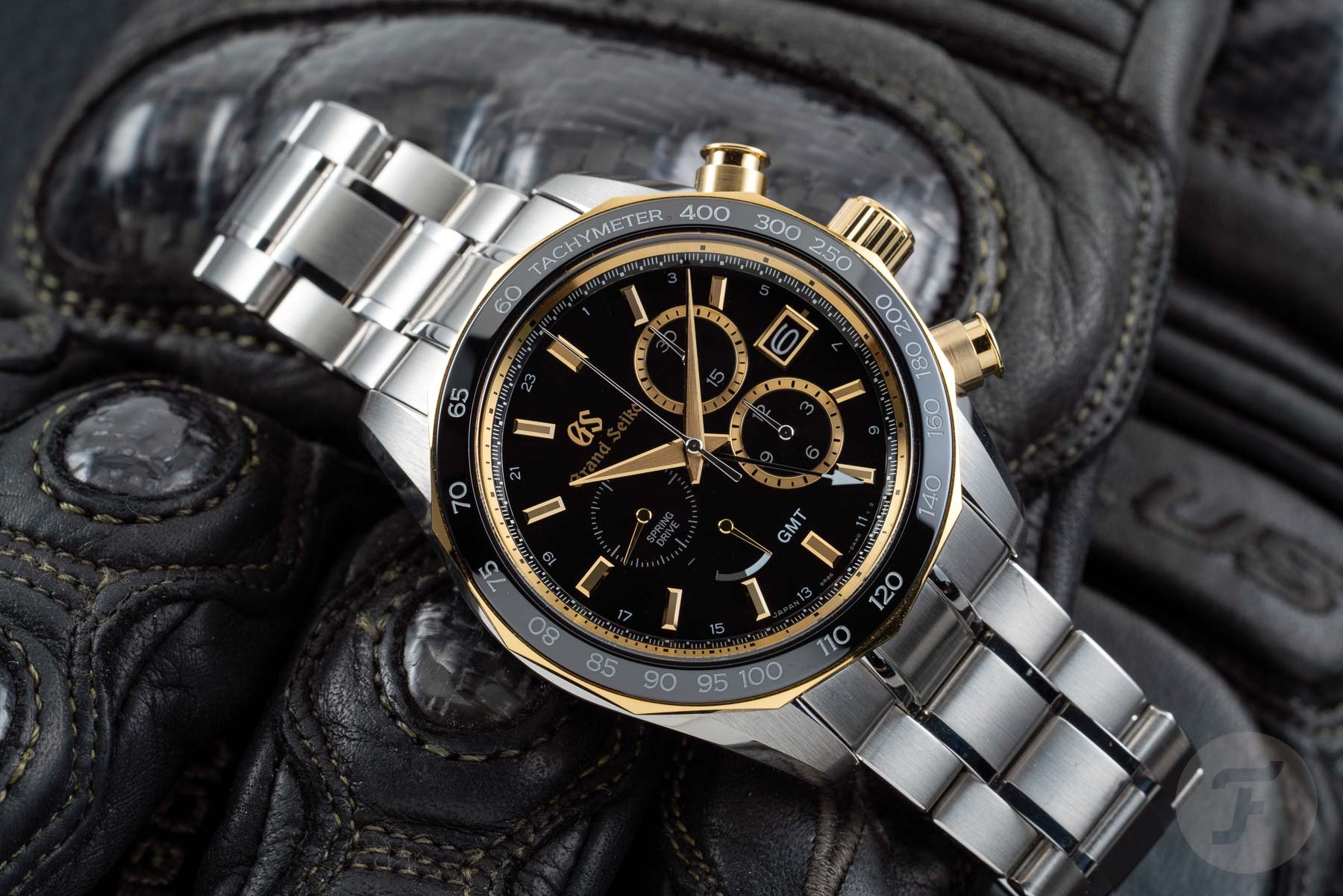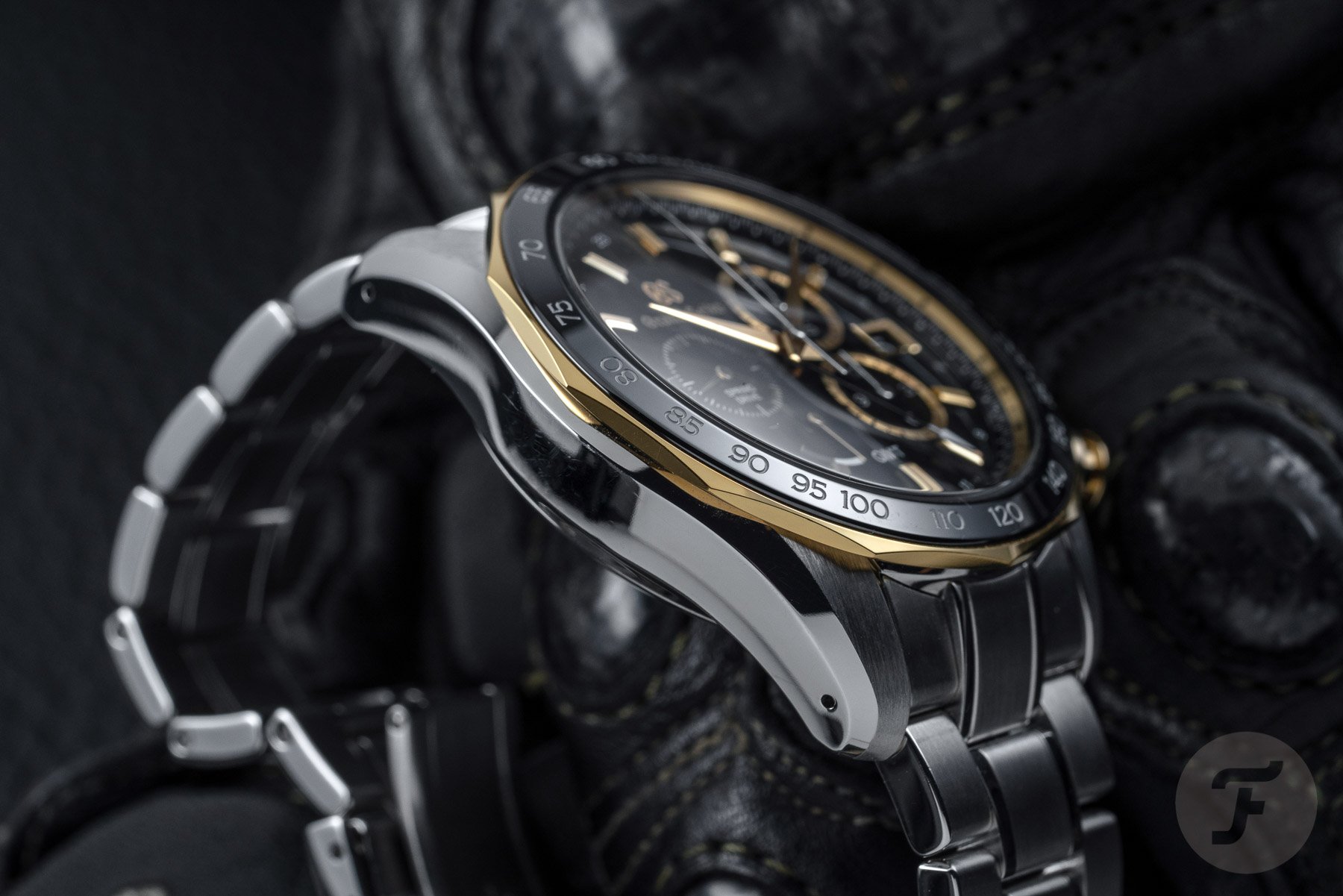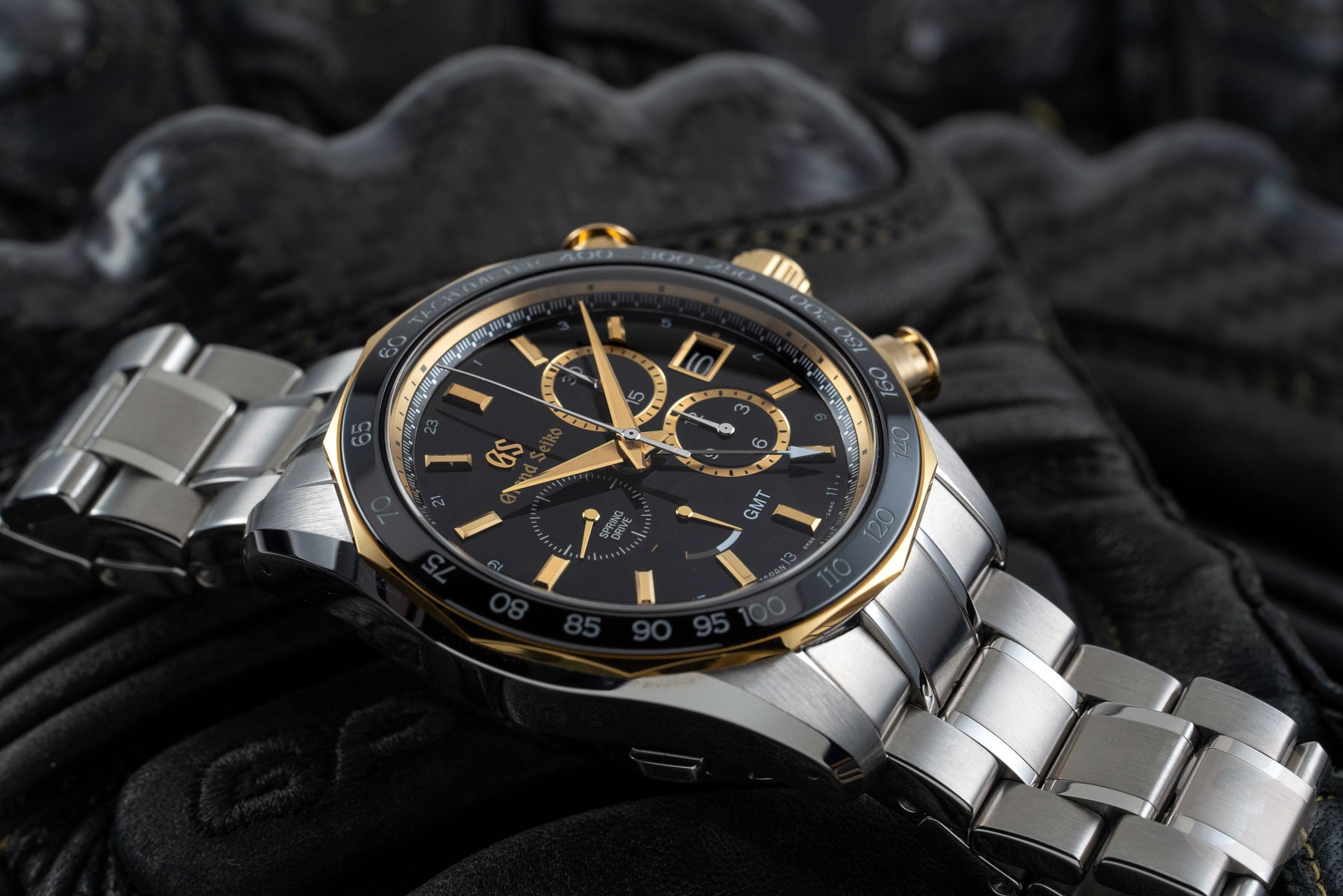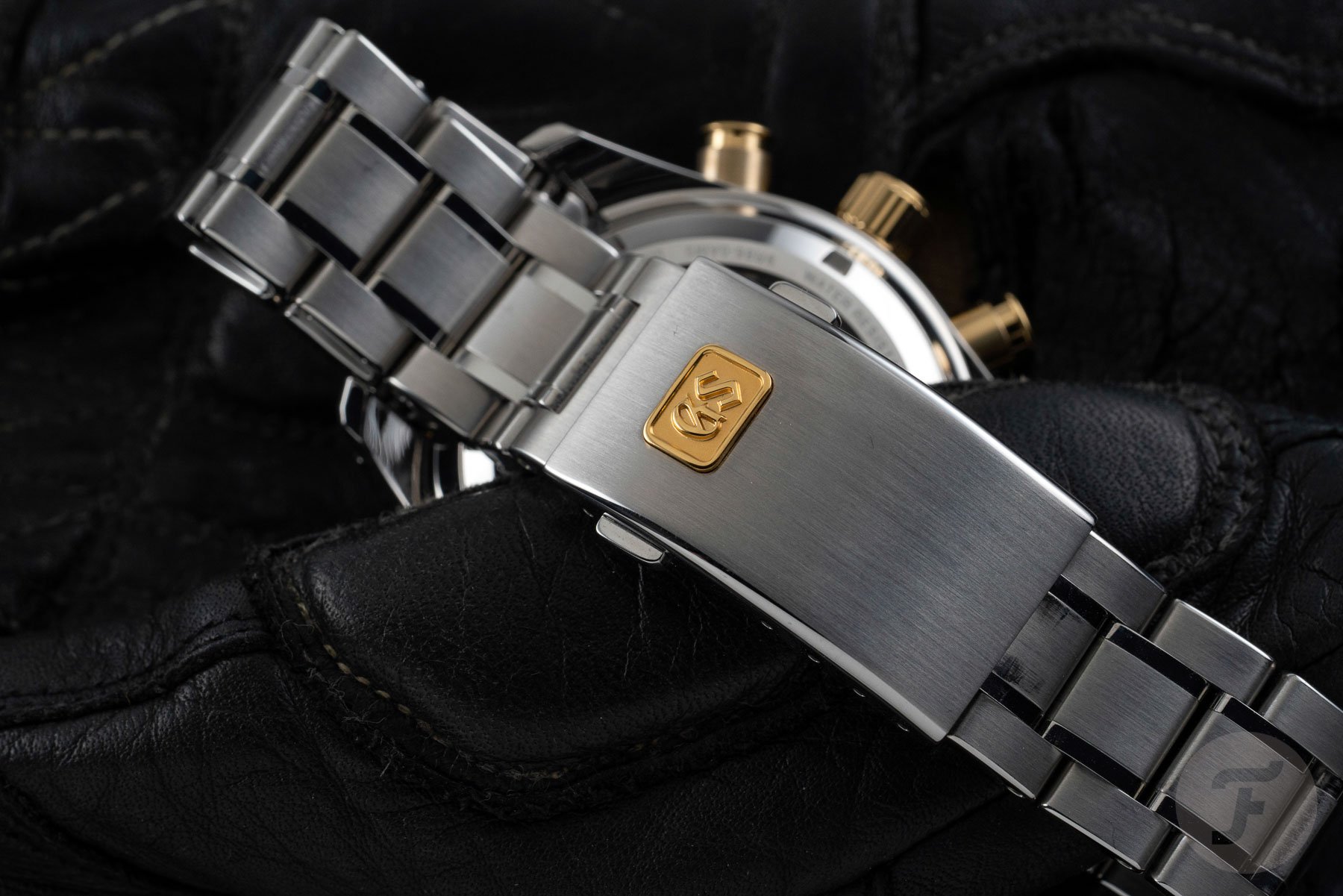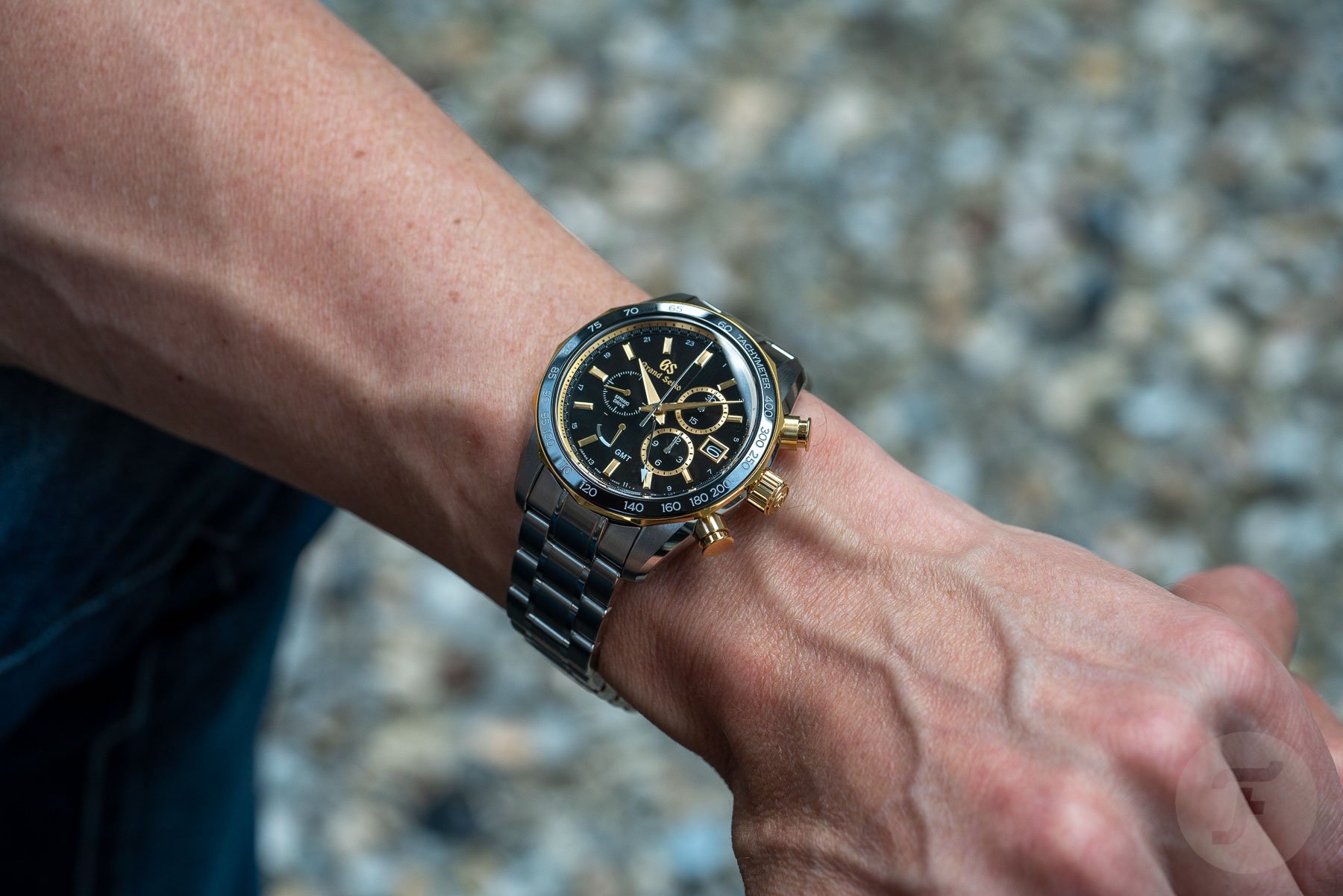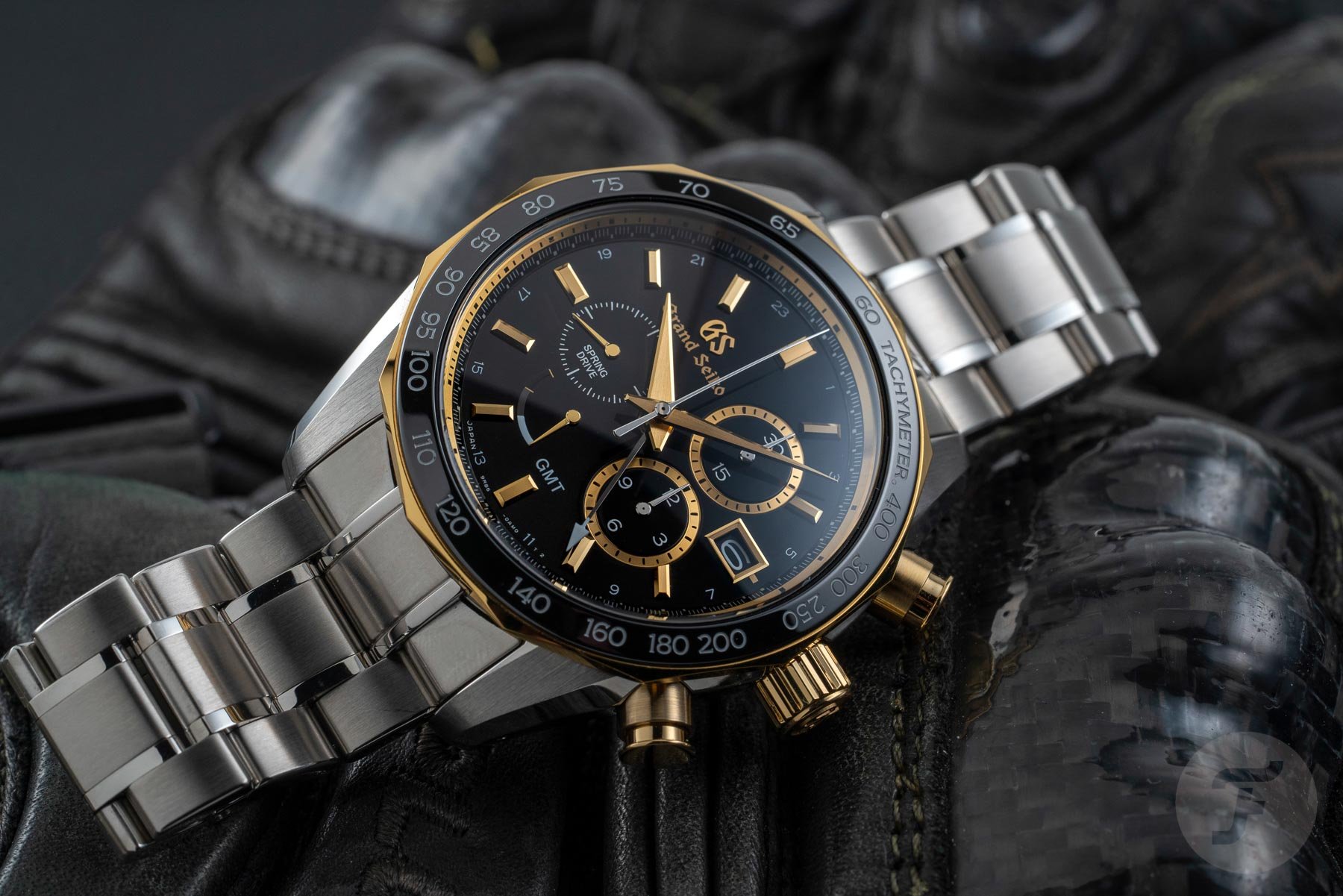Grand Seiko Spring Drive Chronograph SBGC240 — The Chrono To End All Chronos?
How do you like your chronograph? Bi-compax horizontal or maybe vertical? Three-counter Speedmaster or maybe Lemania 5501 style? And what about a single subdial at 12 for the hours and minutes? The agony of choice. And to make things even more complicated, there are the various Spring Drive SBGC model chronographs from Japan with their original layout. And now there’s a new version: the Grand Seiko Spring Drive Chronograph SBGC240 – the chrono to end all chrono’s? Let’s try and find an answer to that question.
Responsible for the unusual dial layout of the Grand Seiko Spring Drive Chronograph SBGC240 is the Spring Drive Caliber 9R86. Seiko claims that this movement, that debuted in 2007, is “by far the world’s most accurate chronograph driven by a mainspring” – modesty is overrated when it comes to Spring Drive, apparently. But we have to say that the hybrid technique Seiko invented is quite something. In comparison, a METAS certified movement has an accuracy that rates between 0 and +5 seconds a day.
A Spring Drive doesn’t tick, no, instead it glides …
Caliber 9R86 has an accuracy of ±1 second a day. The Spring Drive technology also has an advantage related to the chronograph function. A Spring Drive doesn’t tick, no, instead it glides because of the glide wheels. And this glide motion also insures instant stopping of the chronograph when the “stop” button is pushed, since there are no teeth that need to be in the right positions first. As a result, measured portions of time are displayed very accurately. And it happened again when I grabbed the Spring Drive Chronograph SBGC240.
Creatures of habit
As is often the case when talking about Spring Drive equipped watches, the technical side dominates the conversation. It happened here too. I started talking about design, but the mechanics behind the smooth running of the hand took over — the fully integrated chronograph movement comprises 416 parts, 50 jewels, and is lubricated with five different types of oil. So, back to the design. Humans are creatures of habit. And watch aficionados are no different – maybe they are “worse” but I have no hard data to prove that.
Although the design has been around for quite some time, it still strikes me as something new.
So what happens when watches like the Eberhard & Co. Chrono 4 with its four subdials in a row, or a Singer Reimagined Track1 without subdials comes along? Bewilderment is what happens. I speak from personal experience. And the same happened when I first saw a Grand Seiko chrono with the subdials to the right of the central axis. Although the design has been around for quite some time, it still strikes me as something new.
Functionality is not an afterthought
It’s an ergonomically driven idea. Grand Seiko put the chronograph functions closely together – the two subdials almost touch each other, and the pushers to operate the chronograph are also close-by. If you’re timing something, your fingers and eyes know exactly where to go. The date at 3 o’clock might be a bit in the way, but it also helps to keep things “normal”. To rule out any mistakes when operating the chronograph, the running/gliding seconds at 9 o’clock don’t have a gold colored outline like the subdials of the chrono do. What I also really like and applaud is the use of silver colored hands that indicate the measured time, the use of gold colored hands for the running time and power reserve, plus a hand with a pronounced arrow tip for the second timezone. Functionality is not an afterthought in the design of this Spring Drive Chronograph SBGC240.
Three colors and a dozen angles
Apart from its unique dial layout, the Spring Drive Chronograph SBGC240 also stands out because of its three colors. The basis is steel, the second color is black, and the accents are done in gold. As a result, the watch weighs 190g. The 43.8 × 16.1mm steel case has a delicately brushed top side, and the mirror-like, distortion-free Zaratsu polishing on the sides. The contrast between the two finishes is sharp and creates a very dynamic play with light. But there’s more. Take the bezel in two colors. The base of the bezel is executed in 18k yellow gold and shows a newly designed twelve-sided design that matches the twelve indexes on the dial. Have a good look. Every angle of the bezel is aligned with an applied, polished gold index on the dial. And the top of the bezel is done in glossy and scratch-resistant zirconia ceramic.
Rich in every aspect
The Grand Seiko Spring Drive Chronograph SBGC240 that takes its place in the Sport Collection is a limited edition of 500 pieces commemorating Seiko’s 140th Anniversary. Nothing celebrates success like gold and the 18k yellow gold pushers, screw-down crown and the “GS” emblem on the buckle of the steel bracelet are solid proof. The choice of colors is an outgoing way to celebrate a rich history and for that Grand Seiko chose a rich material. The price of €19,200 reflects the complexity of the movement, the materials used, the newly designed bezel, and the limited production run. It’s up to you go whether you go along with the mathematics/pricing done at Grand Seiko HQ or not.
Grand Seiko Spring Drive Chronograph SBGC240 — the chrono to end all chronos? Finally, an answer
Since I touched on the subject of price, I better give my two cents in the conclusion of this article. I think €19,200 is a lot of money for a chronograph with a movement that has been around since 2007 that has been lightly touched by gold. But when I dive deeper into the way Grand Seiko used the 18k gold on the watch – the new bezel is a thing of beauty – and the fact that we’re dealing with a celebratory run of “just” 500 pieces, the price makes (more) sense.
… please keep in mind, the 416 individual movement parts don’t assemble themselves.
And yes, Caliber 9R86 is 14 years old, but if you look at the construction and finishing of that movement through the sapphire case back, you instantly understand this is not your average “engine”. Also, please keep in mind the 416 individual movement parts don’t assemble themselves. And once activated, those individual parts work together like a dream. Time-keeping is excellent, and the buttery smooth way the chronograph starts and stops is a unique horological experience.
So, from that perspective, the Grand Seiko Spring Drive Chronograph SBGC240 could be the chrono to end all chronos. But a watch is also judged by its heritage and design. And while heritage wise this Grand Seiko doesn’t leave a lot to be desired, the design is, and always will be, a matter of taste. A watch in steel, gold, and black will always create controversy. You either love it or you don’t, there’s no real middle ground when it comes to an extravert design like this. One thing about the SBGC240’s design is strictly objective though: it is not a watch you overlook. The Spring Drive Chronograph SBGC240 is available at the Grand Seiko Boutiques and Grand Seiko Salons. For more information, please look the official Grand Seiko website.
Please find and follow me at Lex Stolk • Instagram

